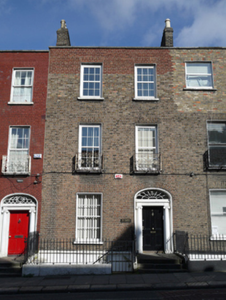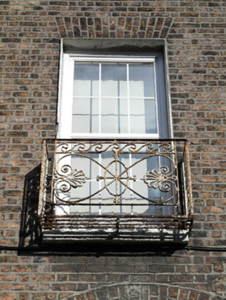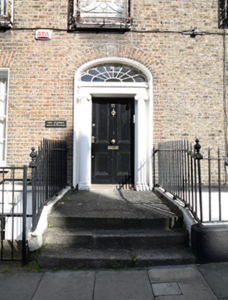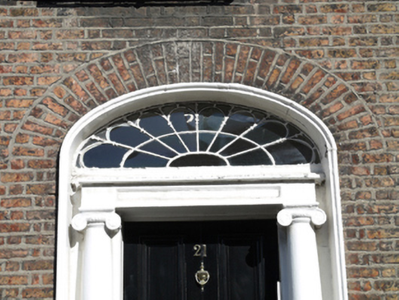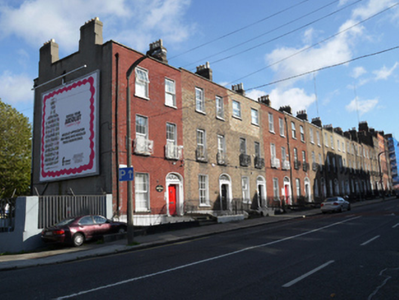Survey Data
Reg No
50010777
Rating
Regional
Categories of Special Interest
Architectural, Artistic
Original Use
House
In Use As
Office
Date
1820 - 1840
Coordinates
316024, 235679
Date Recorded
07/10/2011
Date Updated
--/--/--
Description
Terraced two-bay three-storey house over exposed basement, built c.1830. Now in use as offices. M-profile slate roof behind rebuilt parapet wall with granite coping. Stepped brick chimneystacks to both party walls with clay pots. Yellow brick walls laid in Flemish bond, rebuilt to top floor and laid in English garden wall bond, set on painted granite plinth course above rendered basement wall. Yellow brick walls laid in English garden wall bond to rear elevation. Gauged brick flat-arched window openings with patent rendered reveals and painted granite sills. Replacement timber sliding sash window to ground floor, original ten-over-ten pane to basement level, replacement uPVC to remainder. Cast-iron balconettes to first floor windows and cast-iron grille to basement window. Gauged brick three-centred arched door opening with moulded masonry surround and painted masonry Ionic doorcase, with replacement flat-panelled timber door flanked by engaged Ionic columns on plinth bases supporting panelled lintel cornice with wreath motifs and original petal fanlight. Door opens onto granite platform with cast-iron bootscraper and three granite steps bridging basement area. Platform and basement area enclosed by original wrought-iron railings on moulded granite plinth wall enclosing basement area with replacement steel gate and concrete steps giving access to basement.
Appraisal
This former townhouse is part of a terrace of six similar two-bay houses to the north end of Belvedere Place, which was developed by 1837, and continued to the south at a later date in an identical style. Although smaller than the south end of the street, the houses are embellished with equally decorative elements resulting in a remarkably coherent streetscape. A decorative focus is provided by the elegant doorcase and fine fanlight. The retention of some timber sash windows and the railings to the basement area enhances the building. Laid out in 1795, and named after the Earl of Belvedere, Belvedere Place was one of eight planned streets connecting Mountjoy Square with major thoroughfares. It connects to Dorset Street, via the North Circular Road, on a gentle and gradual descent. Although this house has lost some of its original fabric, it retains a good doorcase and forms a component part of an impressive terrace that extends the grandeur of Mountjoy Square to the north while maintaining the Georgian character of the area.

